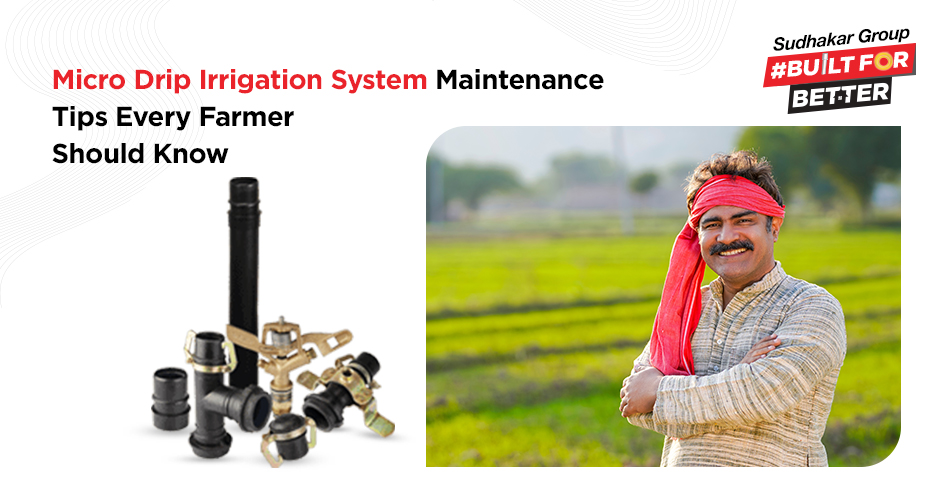If you’re a farmer, you know water is gold. A micro irrigation system can stretch every drop, getting it right to your crops’ roots without waste. But like any tool, your micro drip system needs some essential tips to keep it running smoothly. A neglected system clogs, leaks, or just fails, leaving your fields thirsty and your wallet lighter. So, how do you keep your micro drip irrigation system in top shape? Here are practical tips every farmer can use to maintain their setup and make it last.
Keep Those Filters Clean
The filter is your micro irrigation system’s first line of defence. It catches dirt, sand, and other gunk before it can clog your pipes or emitters. But a dirty filter is like a blocked artery – water flow slows, and your crops suffer. Check your filters at least once a month, more if your water source is murky, like a pond or canal. Pull the filter out, rinse it under clean water, and scrub off any stubborn grime. A clean filter keeps your micro drip system humming and saves you from bigger headaches down the line.
Check Emitters for Blockages
Emitters are the heart of your micro drip irrigation system – they deliver water exactly where your plants need it. But tiny holes mean they’re prone to clogging from dirt, algae, or mineral buildup. Walk your fields weekly and eyeball each emitter. If you see one dripping too slowly or not at all, it’s probably blocked. Use a pin or a small brush to clear it, or soak it in vinegar to dissolve hard water deposits. Keeping emitters clear ensures every plant gets its share, especially in water-scarce spots like Rajasthan or Gujarat.
Flush the System Regularly
Bits of algae, sediment, or even tiny bugs can settle in the pipes, slowing water flow or clogging emitters. Flushing is your fix. Every month or two, open the end caps of your micro drip system and let water run through for a minute. This pushes out the junk. You might need to flush more often if you’re in a dusty area or using well water. Regular flushing can extend your system’s life by years, and it’s a cheap way to avoid replacing pipes. Farmers in Maharashtra, where micro irrigation covers 20% of farmland, swear by this trick.
Watch for Leaks and Damage
A small leak in your micro drip irrigation system might not seem like a big deal, but it adds up – wasted water, uneven irrigation, and a bigger bill if you’re pumping. Walk your lines every couple of weeks and look for wet spots, drips, or cracked tubing. Rodents, farm tools, or even tree roots can nick your pipes. Patch small holes with tape or replace damaged sections. Don’t let a tiny drip turn into a big problem.
Protect Against Sun and Weather
India’s sun doesn’t mess around – blazing heat can make plastic tubing brittle over time. Your micro drip system is tough, but it’s not invincible. Check for signs of UV damage, like faded or cracked pipes. If possible, bury main lines or cover them with mulch to shield them from sunlight. Monsoons can also mess things up – flooding might loosen fittings or wash away emitters. After heavy rain, inspect your micro irrigation system for loose connections or shifted lines. A little prep, like securing pipes with stakes, can save you from costly fixes. Proper care can double the life of your micro drip irrigation system, from 5 to 10 years or more.
Test Water Quality and Adjust
Not all water plays nice with your micro irrigation system. Hard water, full of minerals like calcium, can leave deposits that clog emitters. Salty or algae-heavy water is just as bad. Test your water source every season – simple kits from local ag shops can tell you what’s in it. If minerals are high, add a better filter or use acid flushing (diluted vinegar works) to clean pipes. This step is critical in places like Tamil Nadu, where groundwater salinity is a growing issue. Clean water means a cleaner micro drip system, which means less work for you.
Wrap Up
A well-maintained micro drip irrigation system saves water and boosts your harvest. By cleaning filters, checking emitters, flushing lines, and protecting pipes, you’re not just maintaining equipment – you’re securing your farm’s future.


